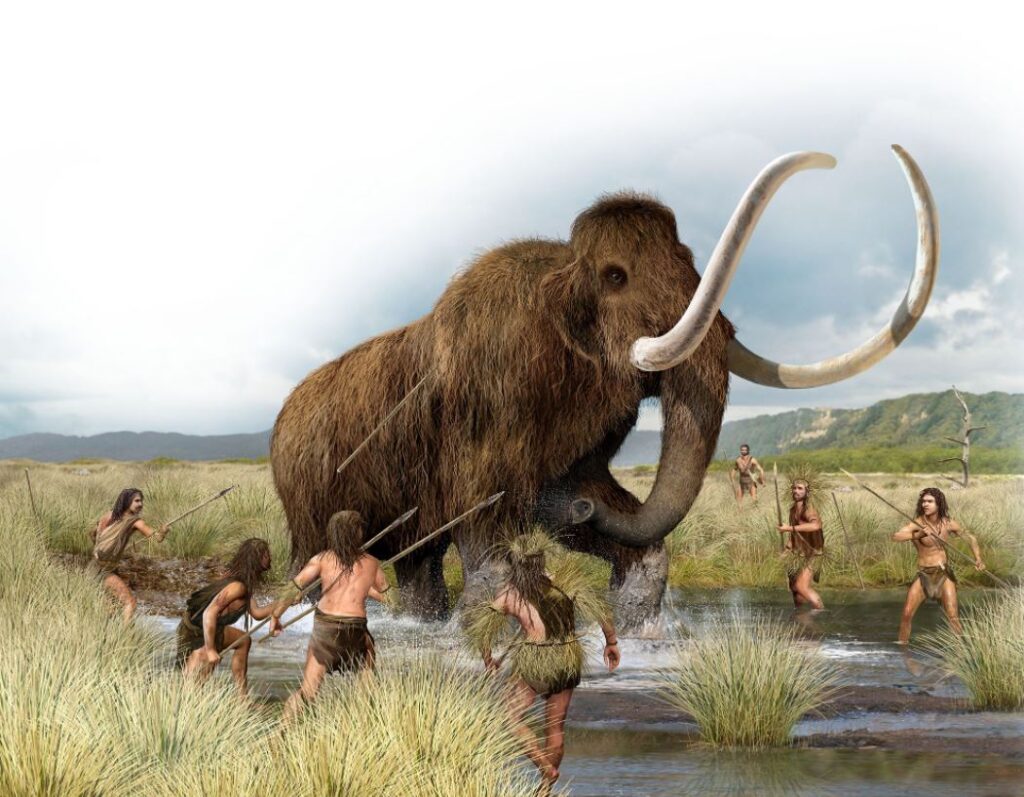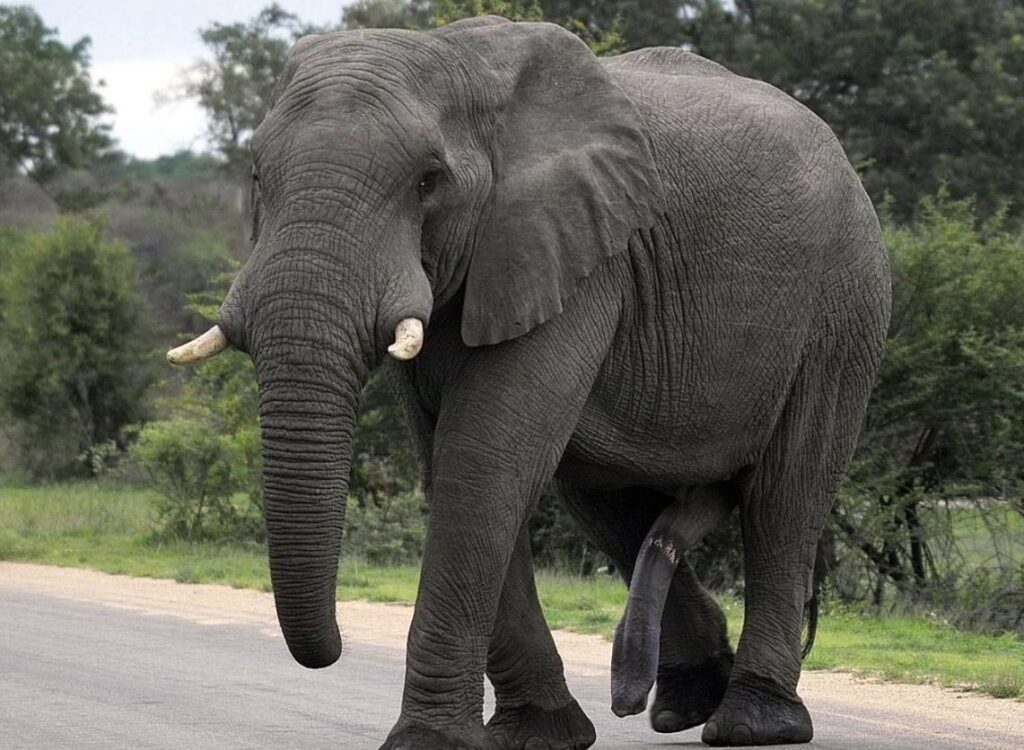Although mammoths are have long been extinct – the last ones having died around 3,500 years ago – you could easily be forgiven for thinking that a mammoth is just another elephant, albeit a much bigger and hairier one. However, despite their similar appearance, there are many differences between the two animals.
How to tell Elephants and Mammoths Apart
1. Size
Mammoths got their name for a reason – they were pretty huge! Of the two types of elephants – African and Asian – the African elephant is bigger and stands at around 11 to 12 feet tall at the shoulder. On the other hand, most mammoths stood at around 14 feet tall, with the Imperial mammoth – the largest – standing 16 feet at the shoulder. Also, not only were mammoths taller than elephants, but they were much heavier too. The Imperial mammoth weighed in at an impressive 10 tonnes, while elephants weigh a mere 6 tonnes. Mammoths also had much stockier legs than elephants, which also attributed to their weight.
2. Hair
Woolly mammoths got their name for one reason – they were very woolly! While elephants have only a sparse covering of hair, mammoths had a thick hairy coat to keep them warm. This was due to the difference in their habitat – while elephants exist across Africa and Asia in hot climates, the mammoths lived during the ice age when it was far colder – they needed their coat to protect them from the icy Arctic blasts.
3. Tusks
Possibly the most noticeable difference between mammoths and elephants is their tusks. While an elephant’s tusks average about six feet long and are shaped on a slight upward curve, a mammoth’s tusks were much, much longer. Compared to the relatively short tusks of an elephant, mammoths commonly had tusks that ranged up to around sixteen feet in length and were often extremely twisted as well as curved, creating a fearsome sight. They often used them to dig through the frozen ground for food, rub the bark from trees, and fight.
4. Colour
Elephants are well known for their grey color and tough, wrinkly skin, but mammoths were completely different. Mammoths were mainly brown or red/orange. It is thought that they molted in summer to become a slightly lighter color.
5. Location & habitat
Mammoths were much more widespread across the world than elephants, with some populations occupying North America. By contrast, elephants have always remained in Africa and Asia. Also, they lived in very different habitats. Elephants have always lived in Africa and Asia, while the mammoths lived during the Ice Age, surviving in harsh conditions and having to forage in the frozen ground for food.

6. Shape
Compared to the shape and proportions of an elephant, a mammoth has much longer front legs, which made their shoulders much higher than their hindquarters and meant that their backs sloped greatly downwards from the shoulder to their rear.
7. Ears
When you think of an elephant, you probably instantly think of those great big flapping ears, right? Well, a mammoth didn’t have those – in fact, their ears were far smaller than those of elephants. This was because they were living in such extremely cold temperatures that smaller ears closer to their heads were much easier to keep warm than massive ones.
8. Teeth
Mammoths and Asian elephants have very similar teeth but different from the African elephant – the teeth of African elephants have a diamond shape, compared to the much more round shape of the mammoth’s teeth.
9. Fatty Hump
One of the most surprising mammoth features was the “fatty hump” on the top of their shoulder, much like a camel‘s hump. This hump was used to store fat deposits to help them survive in the icy Arctic conditions and is not present in elephants.
10. Head
Mammoths and elephants have different-shaped heads, with the African elephant having the most rounded-shaped dome at the top of its head. Asian elephants have a “double-dome”, while mammoths usually had a single dome high up on the top of their heads.
11. Trunk
The trunk of a woolly mammoth differed somewhat from the elephants we see nowadays in that they had two pronounced “fingers” on end. African elephants have two fingers on their trunk, whereas Asian elephants only have one. However, in the mammoth, it was much more pronounced. Scientists have been able to study and compare the differences in mammoth trunks to elephant trunks. Several well-preserved mammoths found in the permafrost with very little deterioration in their bodies considering how long it is since they died.
12. Chromosomes
An elephant has 56 chromosomes, while a woolly mammoth is believed to have had just two more with 58 chromosomes.
Questions & Answers
Question: Are elephants and mammoths the same species?
Answer: While they are not the same species, mammoths, like elephants, belonging to the family group Elephantidae, and so were technically considered elephants themselves. People often assumed that today’s elephants are descended from mammoths, but that’s not true – they are cousins of them as they share common ancestors.
Question: Which would win in a fight – a mammoth or an elephant?
Answer: A mammoth would win, hands down. Between their height, much heavier build (up to twice the weight of an elephant), and their impressive tusks, an elephant wouldn’t stand much of a chance against a mammoth.
Question: Did humans and mammoths exist at the same time?
Answer: Yes, it is believed that early humans were around simultaneously as the last mammoths.
Question: Are there any mammoths alive now?
Answer: No, despite claims that there have been sightings of woolly mammoths in parts of Eastern Russia, known as the Siberian taiga, where there are vast and remote forests, there are not believed to be any mammoths alive today.
Question: Did mammoths have any predators?
Answer: While mammoths didn’t have any natural predators due to their excellent ability to defend themselves with their tusks, mammoth calves were at risk of being attacked by animals such as saber-toothed cats, wolves, and lions.
Question: Were mammoth tusks made from ivory the same as elephant tusks?
Answer: Yes, just like those belonging to elephants, mammoth tusks are made from ivory. Mammoth tusks have been found frequently, and the ivory from them is often sold. However, unlike the trade in elephant ivory, it is completely legal to buy and sell mammoth ivory.
Question: When did the last mammoths die?
Answer: Most mammoths died out around 10,000 years ago, but a small group of them were cut off on Wrangel Island, and the population there survived until around 3,500 years ago.
Question: How long do elephants live?
Answer: Elephants live until they are approximately 65 years old.
Question: Why did the mammoths die out?
Answer: Mammoths died out for several reasons. Hunting by the early humans played a small part in it. Still, it was largely due to the increasing temperatures due to global warming, which resulted in a loss of their habitat, with open spaces and grasslands replacing the forest areas.
Question: Are elephants descendants of mammoths?
Answer: No, although it was originally believed that elephants were descended from mammoths, it is not true. The first elephants were walking the earth simultaneously as mammoths, although in different parts of the world. Elephants are more like cousins of mammoths.
Question: Why did mammoths die out but not elephants?
Answer: Basically, elephants survived while mammoths didn’t because the retreating glaciers pretty much destroyed a massive percentage of the mammoth’s habitat, leaving them nothing to survive on. As huge swathes of their habitat disappeared, they were pushed into smaller and smaller areas to live on until it – and them – disappeared. This is evidenced by the Wrangel Island population having become separated from the rest of the mammoths and ending up trapped there because of the rising sea level (although they did survive several thousands of years longer than the rest of the mammoths).
Question: Are mammoths dinosaurs?
Answer: No, although it’s easy to think that they are dinosaurs because they lived many thousands of years ago and are now extinct, mammoths are not dinosaurs but are mammals. Mammoths lived long after the end of the Cretaceous period, when the last of the non-bird dinosaurs died out.
Question: Are elephants at risk of becoming extinct?
Answer: Elephants are at risk of extinction, and although they are not quite there yet, their population is decreasing. Asian elephants are classified as being endangered, while African elephants are classified as being vulnerable.
Question: When were mammoths first on earth?
Answer: Mammoths first existed from the Pleistocene era, around 5 million years ago, up until the early Holocene era when they died out.
Question: Are elephants dangerous?
Answer: Elephants are usually very gentle and peaceful animals, but females can be very protective of their young, and bull elephants can be dangerous and unpredictable during mating season. Therefore, they can be dangerous animals and can kill people if they attack or provoke them.

